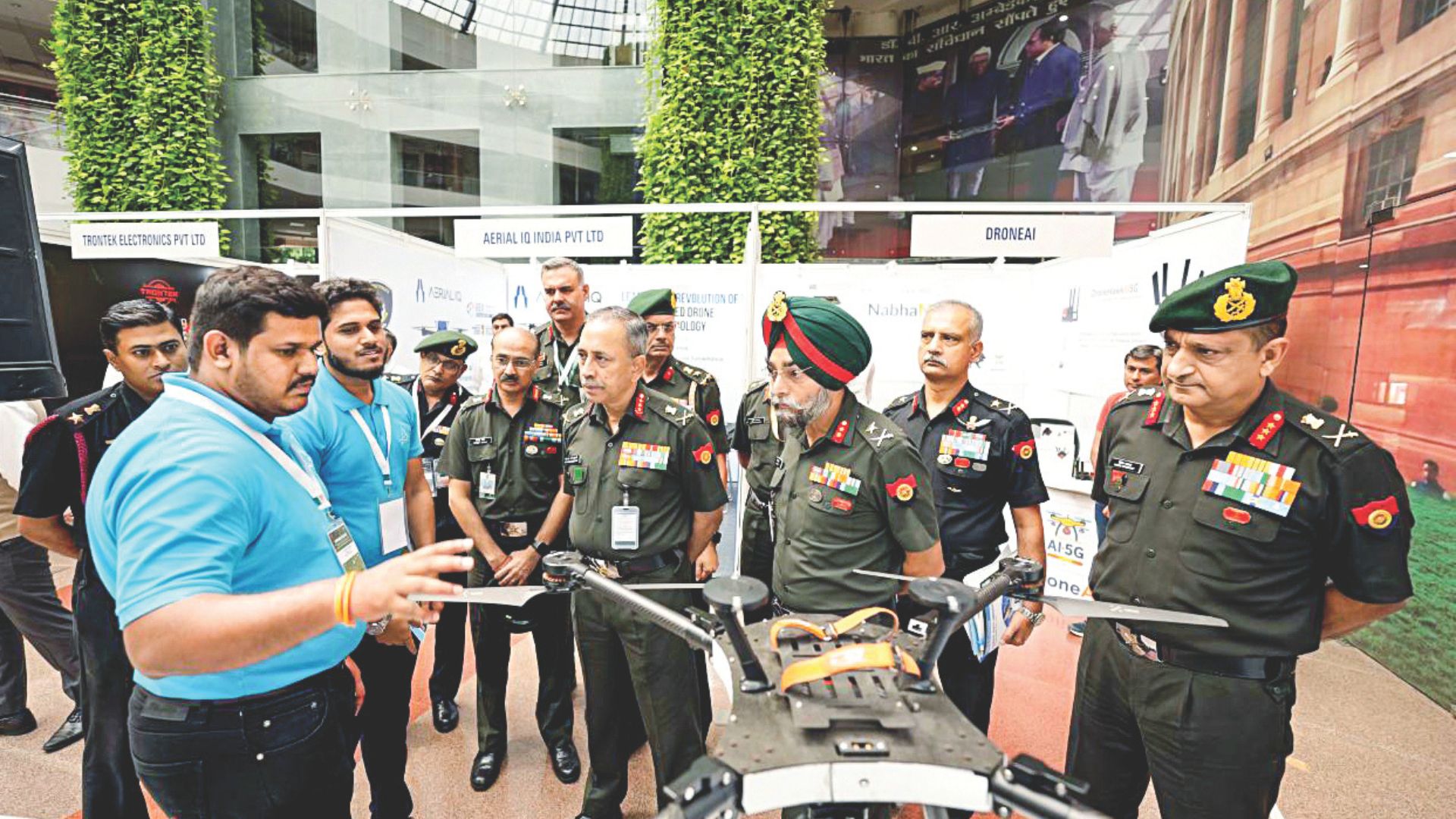New Delhi: India’s drone industry has surged in the past decade, gaining momentum after the COVID-19 pandemic with a focus on ‘Aatmanirbharta’.
In an exclusive interview with The Sunday Guardian, Ankit Mehta, Co-Chair of FICCI Drone Committee and CEO of IdeaForge, shared insights about their supply of key drones to the Indian Army and their upcoming entry into international markets.
Ranked fifth globally in the dual-use (civil and defence) drone sector, IdeaForge leads the Indian unmanned aircraft systems market, as per Drone Industry Insights’ 2023 report.
Excerpts from the interview:
Q. Can you elaborate on Aatmanirbharta in the drone sector? Where do we currently stand?
Answer: At IdeaForge, we’ve been a major supplier to the Armed forces. Our technology—autopilot, communication systems, propulsion, software, and battery management—is fully designed and integrated in-house. Over the last 20 years, we’ve built a highly vertically integrated system, driving deeper into the technology, with everything developed in India.
Q. Tell us more about IdeaForge.
Answer: We’ve spent significant time building this technology. Our drones have completed over 500,000 flights. Almost every four minutes, a drone takes off for surveillance or mapping, which adds to our growing expertise.
Q. How many drones have you delivered to the Ministry of Defence?
Answer: Exact numbers are confidential, but it’s a substantial figure.
Q. Are you exploring international markets?
Answer: Yes, we’ve started testing and demonstrating our products abroad, and soon we’ll enter international markets.
Q. What are the main challenges in achieving Aatmanirbharta in the drone sector?
Answer: The biggest challenge is the lack of depth in subsystem technology for integrators. Reliable subsystems are not always available, and those that are may have proprietary or reliability issues. Additionally, small startups may lack the scale needed for investment, and competing with China’s mass production and low costs is difficult for local manufacturers. This pricing gap creates a vicious cycle, hindering indigenisation.
Q. How can these challenges be addressed?
Answer: Innovation is key, but it requires capital, which is not readily available for hardware development. More investment in R&D is needed, and the ecosystem, with government support, must step up to foster sustainable growth.
Q. The Army discourages using Chinese parts in communication and electronics. What’s your take?
Answer: While China dominates in some areas, it’s not impossible to avoid Chinese parts. Critical components like microcontrollers and communication chips should not be sourced from China for security reasons. However, decoupling from all foreign sources isn’t feasible, and the level of dependency varies.
Q. How do global conflicts impact supply chains, and are we affected?
Answer: We are facing some supply chain disruptions, and China has imposed restrictions. Given the global instability, indigenisation is the only viable solution.
Q. What’s the importance of indigenization in defence, especially in current global conditions?
Answer: With global turbulence, it’s crucial to develop and deliver technology domestically. Though resource limitations exist, indigenisation is the only way to mitigate such issues, especially in the defence sector.
Q. Can India achieve leadership in the drone sector by 2030?
Answer: if we embrace reforms, adopt new ideas, and invest in fresh technology. Every army today requires drones and counter-drone systems, and by fully adopting this technology and managing risks, we can lead the sector by 2030.
‘Subsystem gaps, Chinese competition hinder India’s drone industry growth’
- Advertisement -

